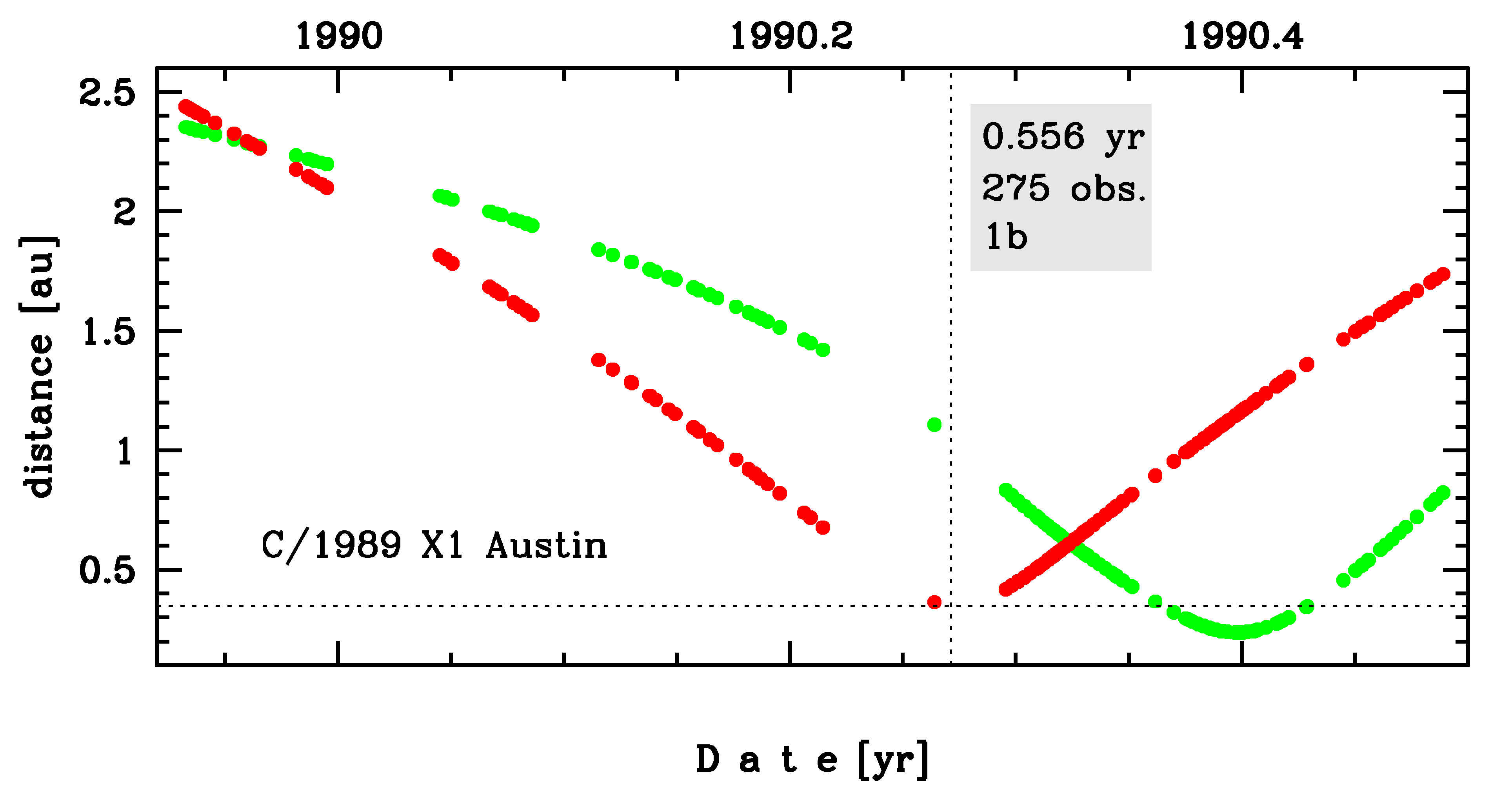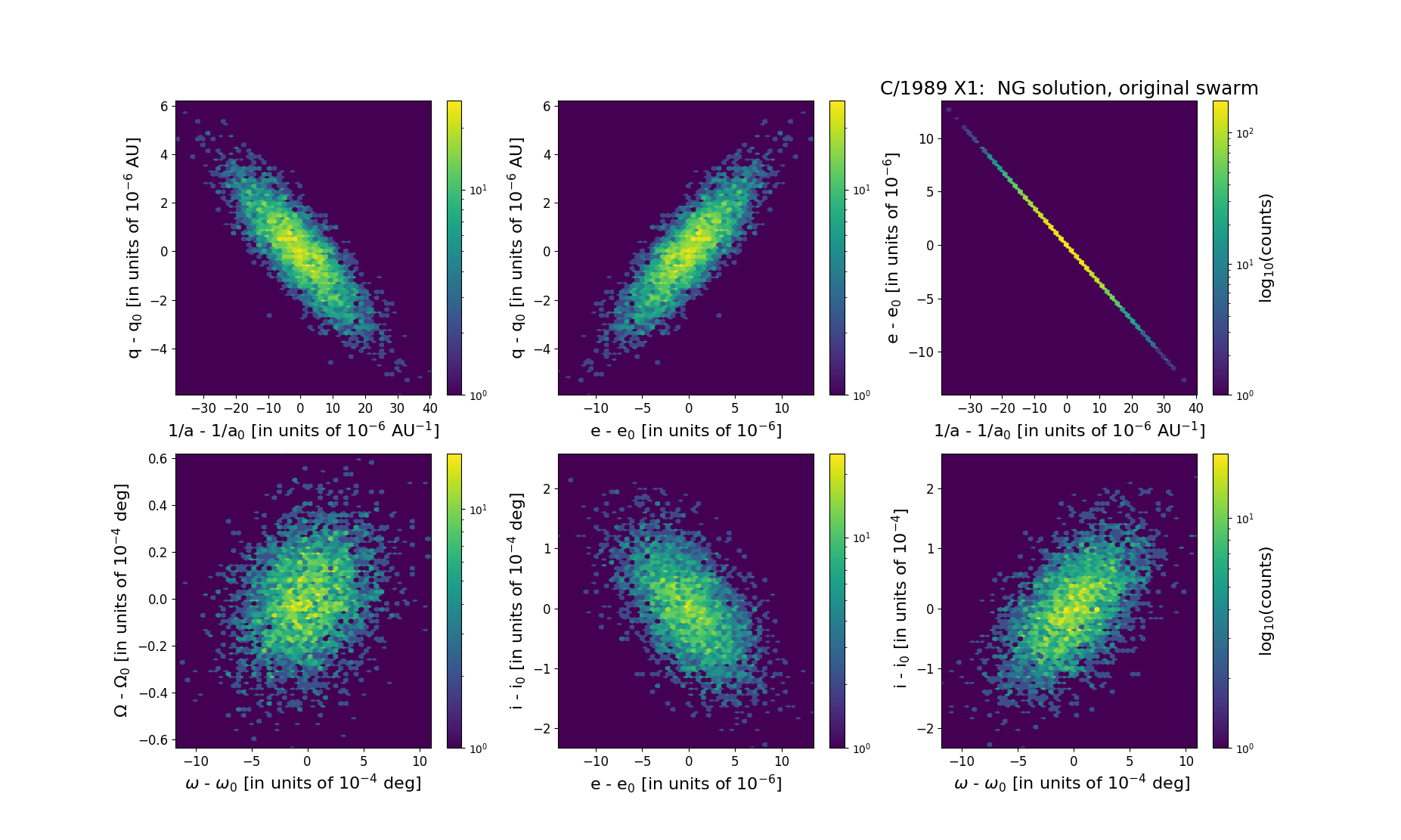C/1989 X1 Austin
more info
Comet C/1989 X1 was discovered on 6 December 1989 by Rodney R.D. Austin (New Plymouth, New Zealand), that is about 4 months before its perihelion passage. This comet was last observed in late June 1990.
Comet had its closest approach to the Earth on 25 May 1990 (0.237 au), about 1.5 month after perihelion passage.
Solutions given here are based on data spanning over 0.556 yr in a range of heliocentric distances: 2.44 au – 0.350 au (perihelion) – 1.74 au.
This Oort spike comet suffers moderate planetary perturbations during its passage through the planetary system; these perturbations lead to escape the comet on hyperbolic orbit from the planetary zone.
See also Królikowska 2014 and Królikowska 2020.
Comet had its closest approach to the Earth on 25 May 1990 (0.237 au), about 1.5 month after perihelion passage.
Solutions given here are based on data spanning over 0.556 yr in a range of heliocentric distances: 2.44 au – 0.350 au (perihelion) – 1.74 au.
This Oort spike comet suffers moderate planetary perturbations during its passage through the planetary system; these perturbations lead to escape the comet on hyperbolic orbit from the planetary zone.
See also Królikowska 2014 and Królikowska 2020.
| solution description | ||
|---|---|---|
| number of observations | 275 | |
| data interval | 1989 12 06 – 1990 06 27 | |
| data type | perihelion within the observation arc (FULL) | |
| data arc selection | entire data set (STD) | |
| range of heliocentric distances | 2.44 au – 0.35 au (perihelion) – 1.74 au | |
| type of model of motion | NS - non-gravitational orbits for standard g(r) | |
| data weighting | YES | |
| number of residuals | 537 | |
| RMS [arcseconds] | 1.28 | |
| orbit quality class | 1b | |
| orbital elements (barycentric ecliptic J2000) | ||
|---|---|---|
| Epoch | 1692 11 06 | |
| perihelion date | 1990 04 09.25809190 | ± 0.00012837 |
| perihelion distance [au] | 0.34831385 | ± 0.00000156 |
| eccentricity | 0.99998577 | ± 0.00000345 |
| argument of perihelion [°] | 61.656955 | ± 0.000303 |
| ascending node [°] | 75.909182 | ± 0.000017 |
| inclination [°] | 58.983562 | ± 0.000065 |
| reciprocal semi-major axis [10-6 au-1] | 40.84 | ± 9.89 |
| file containing 5001 VCs swarm |
|---|
| 1989x1n1.bmi |

